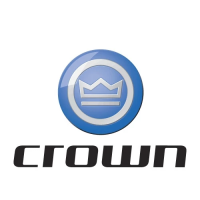LIFTING MECHANISM
Lift Chains
334
M7.5-18.0-002
08 Rev. 7/07
Rust and Corrosion
Chains used on lift trucks are highly stressed precision
components. It is very important that "as-manufac-
tured" ultimate strength and fatigue strength be main-
tained throughout the chain service life.
Corrosion will cause a major reduction in the load-car-
rying capacity of lift chain or roller chain because cor-
rosion causes side plate cracking.
It is extremely important to protect lift chains from cor-
rosion, whether in service or in storage. The initial fac-
tory lubrication on chains is an excellent rust and cor-
rosion inhibitor. Factory lube is applied in a hot dip tank
to insure complete penetration into the joint. Do not
steam clean or degrease new chains. After the chain
has been placed in service, factory lube must be sup-
plemented by a maintenance lubrication program.
Refer to applicable lubrication and adjustment section
for your particular truck series and/or the lubrication in-
formation later in this section.
Heavy motor oil serves both as a joint lubricant and
corrosion inhibitor. During inspection, carefully exam-
ine external chain surfaces for the presence of an oily
film. Under certain operating or environmental condi-
tions it may be necessary to oil chains more frequently
than 100 hour intervals. In all cases, the external sur-
face of the chain must be protected with a film of oil.
Corroded chains should be inspected for cracked
plates. Outside plates are particularly susceptible to
stress corrosion cracking. If chains are heavily rusted
or corroded they should be removed from the mast for
a thorough inspection for cracked plates. If plates are
cracked, both chains on the truck must be replaced. Oil
chains when they are reinstalled on the mast.
Cracked Plates
The most common cause of plate cracking is fatigue
failure. Fatigue is a phenomenon that affects most met-
als and many plastics. After many repeated heavy
loads the plates may crack and the chains will eventu-
ally break.
Fatigue cracks are almost always found through the pin
holes perpendicular to the pitch line. (Refer to Figure
16847) Contrast this failure mode to the random fail-
ures caused by stress-corrosion cracking. (Refer to
Figure 16846) If any fatigue cracks are discovered dur-
ing planned maintenance (PM) inspections, both lift
chains should be replaced. Many apparently sound
plates will be on the verge of cracking, making chain
failure very likely.
Figure 16845
With Forks Lowered
Check Either Front
or Rear Pulley for
Chain Wear
Figure 16846
Figure 16847
Corroded Chain
(with Stress-Corrosion Cracks)
Crown 1984 PF5856-2 Rev. 7/07

